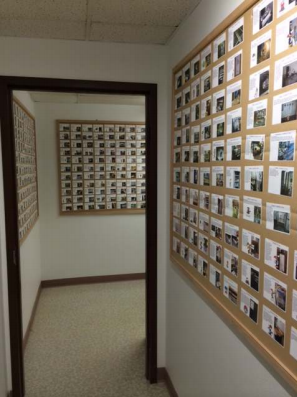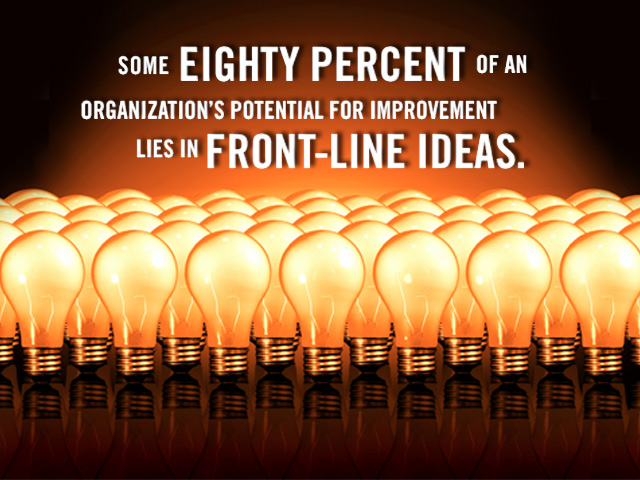There is no one best way to start up a high performance idea system, but when comparing those that thrive with those that struggle an important distinction emerges. The initiatives that flourish and grow are in organizations that approached the process with an eye toward learning. There is a lot to know about how to manage ideas, much of which runs counter to the way most of us have learned to manage. The story of Mark Lewis, President of Woodfold Manufacturing, an Oregon-based maker of wood products, is a good example of how this learning can take place.
When Mark decided to encourage his company’s front-line employees to offer their improvement ideas, he did not simply put up collection boxes or ask for ideas, he began by pulling together the heads of the company’s four manufacturing areas and giving them a copy of Ideas Are Free, (our first book on idea systems). He asked them to read the first chapter and be prepared to discuss it during a meeting the following week. At the end of that meeting, Mark assigned each manager a different chapter and tasked them with leading that chapter’s discussion in subsequent weeks. The chapter facilitator’s responsibility included capturing what the managers agreed were the important points of the chapter and highlighting them in a clean copy of the book. Much of the discussion focused on how these ideas could be applied at Woodfold. Mark was careful not to offer his comments on each chapter until after his managers were finished. When the reading group completed the book, each manager was asked to apply what he had learned in his area.
After some struggle, Mark and his managers determined that a more systematic approach was needed to simplify the way ideas were captured and implemented. Because the people on the front lines were in the best position to know how to improve their specific jobs, they were empowered to implement their own improvement ideas as long as an idea did not: 1) negatively impact safety, 2) decrease quality, and 3) did not change the form, fit, or function of the product. This approach limited the need for heavy management involvement with basic ideas and significantly sped the implementation process.
The overall theme of Woodfold’s idea system was to make work easier. Mark has noticed that one of the outcomes of the company’s kaizen improvement events was to make people’s work easier. He surmised that focusing small ideas on making work easier would also lead to improvement in productivity and less waste. Indeed, this proved to be the case and “Woodfold Do Easy” (DE) became the name of the idea program.
Mark quickly learned that running an idea-driven organization was not simply about setting up an idea systems and waiting for the ideas. He is constantly searching for barriers that slowdown or deter ideas, and is regularly coming up with schemes to encourage his people to offer more ideas. For example, to keep people focused on the importance of ideas and to celebrate success, a photograph and story about
 each successfully implemented idea is posted on a wall somewhere in the company. Today many hallways are festooned with ideas (See photo), and the impact on people’s engagement and company performance is significant.
each successfully implemented idea is posted on a wall somewhere in the company. Today many hallways are festooned with ideas (See photo), and the impact on people’s engagement and company performance is significant.
There are several key lessons that can be drawn from Mark Lewis’s experience at Woodfold. First, start with the best knowledge you can and plan on continuing to learn as you move forward. Second, keep it simple. The challenge of making a system simple and effective often involves a lot of thought and knowledge. As one of Mark’s favorite quotes from Albert Einstein states, “It is easy to make things hard. It is hard to make things easy.”
Perhaps the most important lesson is to get the learning process started. This can start with something as simple as piloting an idea system by setting up a board in one department and ask people to post ideas on how to make their work easier and more productive – ask them to also post nagging problems that are getting in their way. Then meet with the team and discuss each idea, which ones to work on the following week, assign responsibility for each, and set up the next weekly idea meeting to follow through.
Always look for ways to improve the systems. As Mark Lewis discovered, even success creates new challenges. Today one of his nagging problems comes from the fact that Do Easy has changed the company’s culture. Employees often make improvements without recording them. Mark complains that this makes it hard to track the system’s performance and impossible to replicate many good ideas that can be used elsewhere.


